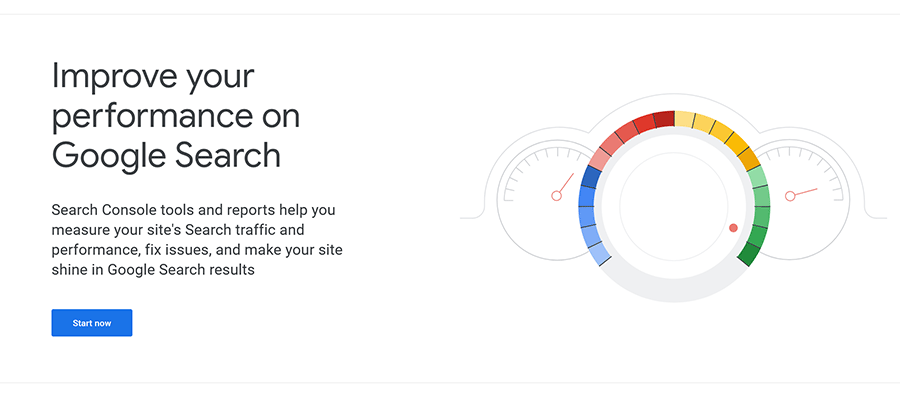I’ve been online since the days before search engines. Imagine a world where you’d find websites by sheer luck. We never knew where a hyperlink would take us. Thus, we “surfed” the web.
Then, search engines came along. Providers such as Yahoo, AltaVista, and (eventually) Google made it easier to find websites.
Almost immediately, humans began trying to manipulate these tools. People would do just about anything to propel their website to the top. Keyword stuffing and adding hidden text were among the “black hat” techniques of the day.
This behavior marked the early days of search engine optimization (SEO). A cottage industry has grown around trying to get Google’s blessing. And it includes people who do play by the rules.
It’s just that the rules keep changing. And they’re not always clear. You might be an SEO champion today. But that could change with a mere hiccup in an algorithm.
The whole thing has left a bad taste in this designer’s mouth. And I wonder if the way we practice SEO is past its prime.
Perhaps we should focus on the basics instead of chasing every new gimmick. Let’s talk about it.
Guessing What Google Wants Us to Do
What I’m about to say may sound obvious – but here it goes: Google makes all the rules. Sure, there are organizations for putting standards in place. And other search providers exist. Only one company has the power to change the game in an instant, though.
Google publishes plenty of information on SEO. However, it tends to be vague. That’s on purpose. We can’t expect them to share the inner workings of their algorithm, can we?
Plus, every website is different. Perhaps the best Google can do is provide general guidelines. There are too many variables at play to offer specifics or guarantees.
The situation leads to a lot of interpretation and speculation. We may “think” we know what Google wants from our website. If we only do this, that, and the other, we’ll stay ahead of the competition.
Sometimes, we hit the jackpot. Our site ranks well and brings in search traffic. But fortunes can change at any time.
Did a competitor outsmart us? Did Google change something important? Could they have made a mistake?
The answers aren’t always obvious. If you find an answer at all, that is. The reasons for a sudden downturn can be mysterious.
Focus on the Fundamentals of SEO
Yes, SEO can quickly become a mess. Tracking Google’s every move will have you spinning like a dog chasing its tail. Is it worth all the trouble?
Here’s the thing: we don’t have to buy into all of the hype. Nor do we have to play guessing games.
The fundamentals of SEO aren’t mysterious or broken. Maybe it’s time to step back and focus on what we can control.
Here are a few SEO practices that never go out of style:
Publish Quality & On-Topic Content
The more we try to please Google, the worse our content gets. In practice, this means repeating keywords ad nauseam. Or artificially inflating word counts.
Sometimes, we train our focus on bots instead of humans. The result is content that doesn’t lead to conversions – or social media shares.
Try to remember the reason your content exists. Think about your audience and the message you want to share. From there, develop a plan to make it work as efficiently as possible.
Content that is informative and helpful will always be a winner. And there are no tricks required.

Take Steps to Organize Your Content
Both users and search engines appreciate well-organized content. Your website will be easier to navigate. Search engines will gain a better understanding of who you are. It’s a win-win situation.
Content management systems (CMS) like WordPress simplify the process. You can use parent/child relationships and taxonomies to organize content. These tools will help you create a logical content structure.
Meanwhile, features such as breadcrumb navigation and related post listings go a step further. They offer convenience and increase content discoverability.
Adding structured data can also be helpful. This data can enhance your SERP (search engine results page) listings. The information displayed could convince users to make that click.
Use Helpful Tools for On-Page Optimization
The right SEO tool can help you optimize content with confidence. It’s like having an expert guiding you through each step.
WordPress users have access to an array of options. Several SEO plugins are available – and they specialize in various tasks. Some are jack-of-all-trades, while others focus on niche use cases.
These plugins are great for ensuring quality. For example, some will “grade” your content based on best practices. You can use them to cover the basics.
Don’t follow these ratings too literally, though. You’ll end up in the same trap of trying to please a bot.
Oh, and be careful about combining SEO plugins. Make sure their functionality doesn’t overlap. That can cause problems.

See the Bigger Picture with Analytics & Search Console
If you want to gauge your SEO progress, start with an analytics app. You’ll get a baseline for your search performance. And you can see how various tweaks impact your numbers over time.
Google Analytics is still free to use. And it works well enough – if you can deal with the changes in version 4. But there are other providers worth checking out. Go with whatever tool fits your budget and needs.
Google Search Console is also a worthwhile tool. You’ll be able to learn more about how Google is indexing your content. It will also alert you of any errors.

Build a Great Website – Not a Shrine to Google
Perhaps the folks at Google are flattered by all the attention we show them. Some of us build websites that aim to please them at every turn. But it’s easy to let the search giant distract us from what matters.
Following the hot new SEO trends tends to lead us nowhere. The rug will eventually get pulled out from under us. And what do we do then?
The safer bet is to focus on the basics. Produce quality content. Make sure your website is organized, performant, and accessible. Use the available tools to ensure proper markup. Measure your progress and adjust as needed.
That will put you in a position to succeed. And it doesn’t mean you should ignore algorithm changes. Just don’t live and die with them. Take them for what they are.
Your goal is to build a website that pleases your audience. Users will be happy. And search engines will take note.
It’s Time to Get Back to the Basics of SEO Medianic.















